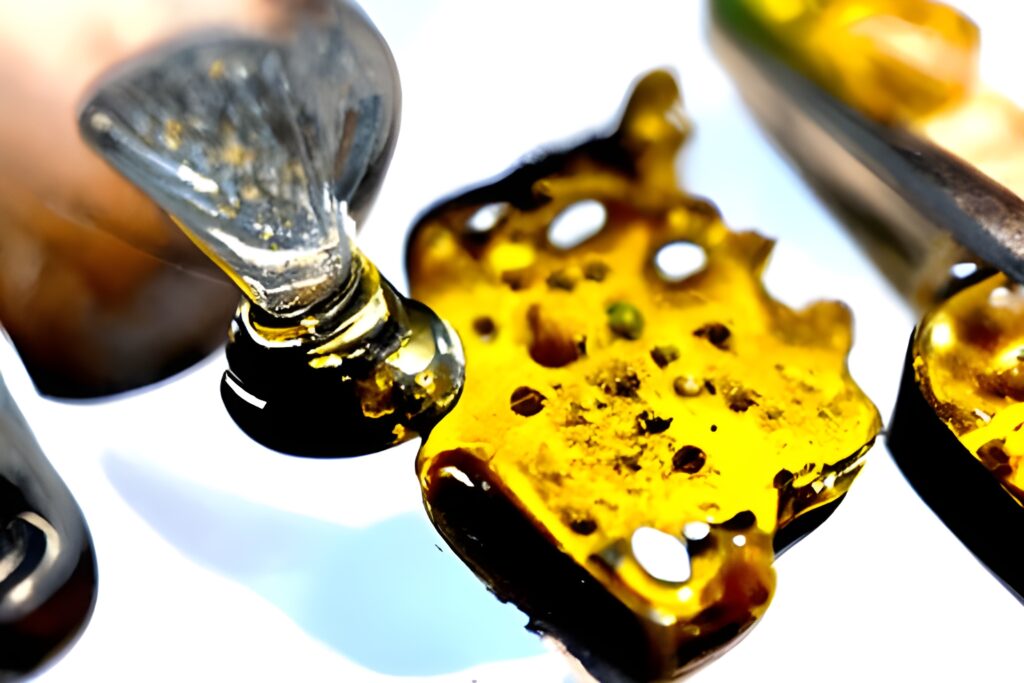Cannabis concentrates have become increasingly popular among cannabis users due to their potency and efficiency. However, it is important to note that, as with all cannabis products, understanding what you’re consuming, including the amount of THC, is essential.
What Are Cannabis Concentrates?
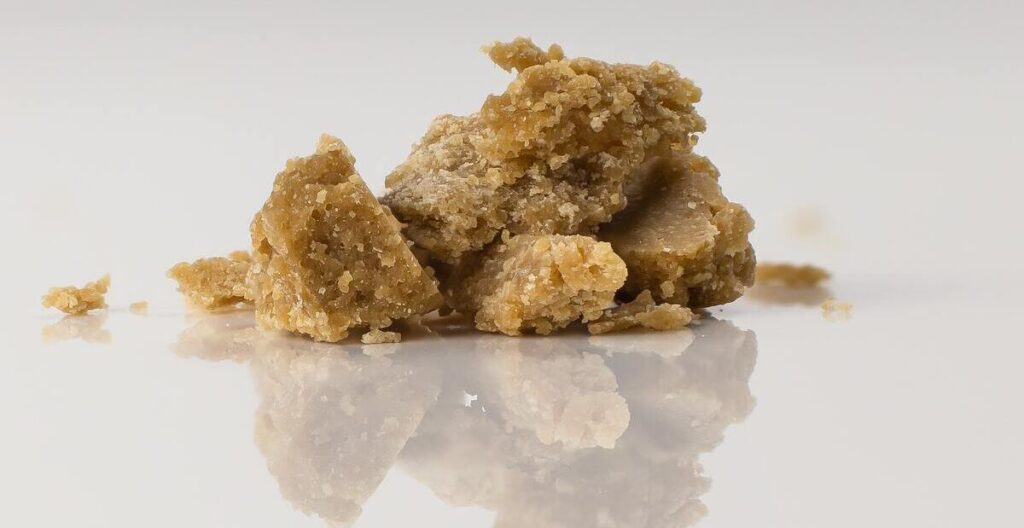
Cannabis concentrates are produced by different extraction methods, which involve removing the trichomes, the resinous glands containing the plant’s cannabinoids, terpenes, and flavonoids. Once extracted, the resulting concentrate can be used in several ways, including dabbing, vaporizing, or adding to edibles.
Types of Cannabis Concentrates
There are many types of cannabis concentrates, and each type has a different THC content. Let’s take a look at some of the most popular cannabis concentrates and their average THC content:
Shatter
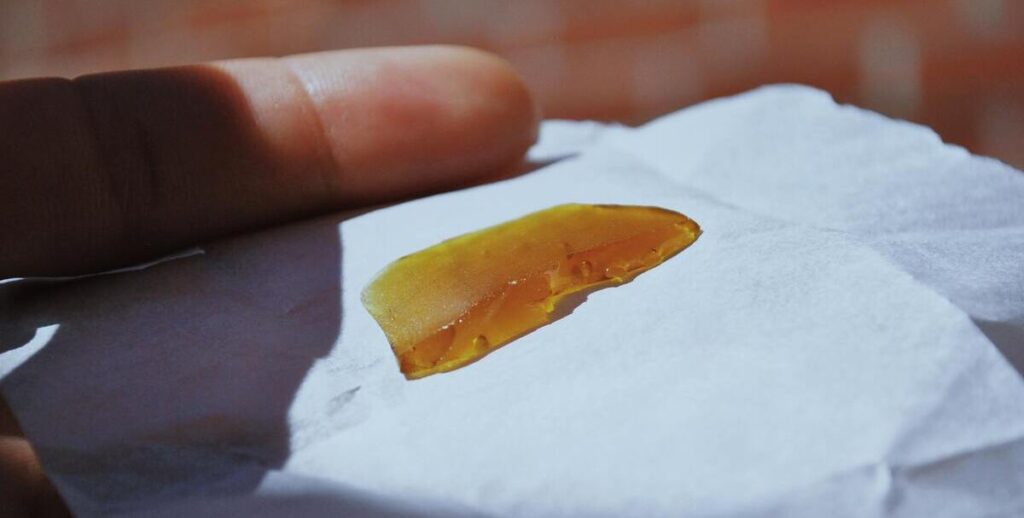
Shatter, a type of cannabis concentrate is known for its glass-like texture, and producers extract trichomes from cannabis plants using a butane solvent. The resulting product is a highly potent concentrate containing anywhere from 70% to 90% THC.
Wax
Like shatter, wax is a cannabis concentrate that is widely popular among cannabis users for its soft, wax-like texture. The extraction process involves using a butane solvent to extract trichomes from cannabis plants. However, unlike shatter, the end product is whipped to create a more malleable consistency. As a result, wax is easier to handle and manipulate. The final product is highly potent and can contain anywhere from 70% to 90% THC.
Budder
Like wax, budder is also a cannabis concentrate known for its soft, butter-like texture. Budder is produced through a similar extraction method as shatter and wax, where a butane solvent is used to extract trichomes from cannabis plants. However, the end product is whipped for a more extended period, resulting in a smoother consistency. Budder typically contains high levels of THC, ranging from 70% to 90%.
Live Resin
Live resin, unlike other cannabis concentrates, is made from fresh cannabis plants that have not been dried or cured, which allows the trichomes to retain more natural terpenes, resulting in a more flavorful and aromatic concentrate.
Making live resin involves flash-freezing the fresh cannabis plant material immediately after harvesting it to preserve the terpene content. Once frozen, the plant material is then extracted using a solvent, such as butane or CO2, to create a highly potent concentrate containing anywhere from 80% to 90% THC.
Distillate
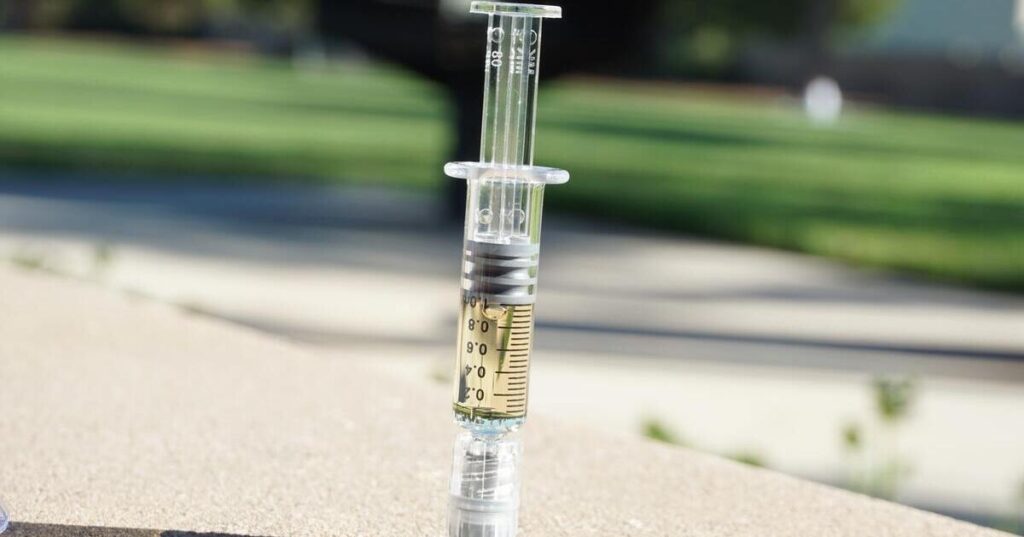
Distillate is a highly potent cannabis concentrate obtained from the distillation process. In this method, the cannabis plant material is heated to release the cannabinoids, which are then collected and condensed into a concentrated form.
Unlike other concentrates that contain a range of cannabinoids and terpenes, distillate is typically pure THC. It can have up to 99% THC, making it one of the most potent forms of cannabis available.
Due to its high potency, distillate is often used to make other cannabis products that require precise dosing, such as edibles or vape cartridges. Additionally, distillate can be used independently, but it’s important to note that its lack of other cannabinoids and terpenes can result in a less nuanced high compared to other concentrates.
The Importance of Knowing THC Content
Knowing the THC content of a cannabis concentrate can help users:
- Determine the appropriate method of consumption. Some concentrates, such as distillates, are best consumed through vaporization or ingestion, while others, such as shatter and wax, are more suited for dabbing.
- Understand the effects of the concentrate. Higher THC concentrations can produce more intense psychoactive effects, while concentrates with lower THC content may have more balanced effects.
- Avoid unintentional overconsumption. Without knowledge of the THC content, users may unknowingly consume more than they intended, leading to adverse effects.
Understanding the THC content of cannabis concentrates is crucial for safe and responsible consumption. By choosing the right product and dosing appropriately, users can enjoy the benefits of concentrates while avoiding adverse effects.
How Strong Are Dabs Compared To Smoking Flower?
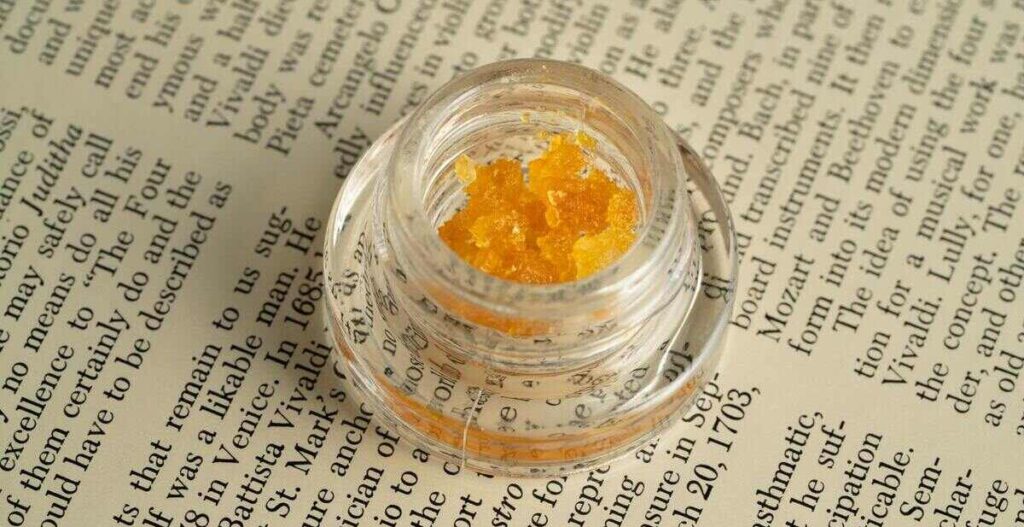
To compare the strength of dabs to smoking flower, the traditional method of consuming cannabis, it’s important to note that dabbing involves heating a small amount of concentrate, usually, wax, shatter, or oil, on a hot surface and inhaling the resulting vapor. However, it is worth considering how the two methods differ regarding potency.
Dab THC Content
When comparing the strength of cannabis dabs to smoking flower, one primary factor to consider is the THC content. Generally, cannabis flower has a THC content that ranges from 10% to 30%, with some strains reaching as high as 35%. In contrast, cannabis concentrates can contain THC content ranging from 60% to 90% or more, which makes them much more potent than cannabis flower.
Dab Inhalation Method
In addition to the THC content, the inhalation method is another factor that can influence the strength of cannabis dabs compared to smoking flowers. Dabbing involves inhaling vapor directly into the lungs, which can result in faster and more intense effects.
On the other hand, smoking flower consists in burning the plant material, which can cause the loss of some cannabinoids and terpenes, leading to a slower onset of effects.
Tolerance
The perceived strength of cannabis dabs compared to smoking flower can also be influenced by tolerance. Regular cannabis users who have developed a tolerance may require higher doses of cannabis to achieve the desired effects. For these users, cannabis dabs may be a more effective way to consume cannabis due to their high THC content.
In general, cannabis dabs are considered to be much stronger than smoking cannabis flower due to their higher THC content and the method of inhalation. However, it is important to note that cannabis dabs may not be suitable for everyone and should be consumed responsibly and in moderation.
For new users or those with low tolerance levels, starting with small doses and gradually working up to avoid overconsumption and adverse effects is recommended.

